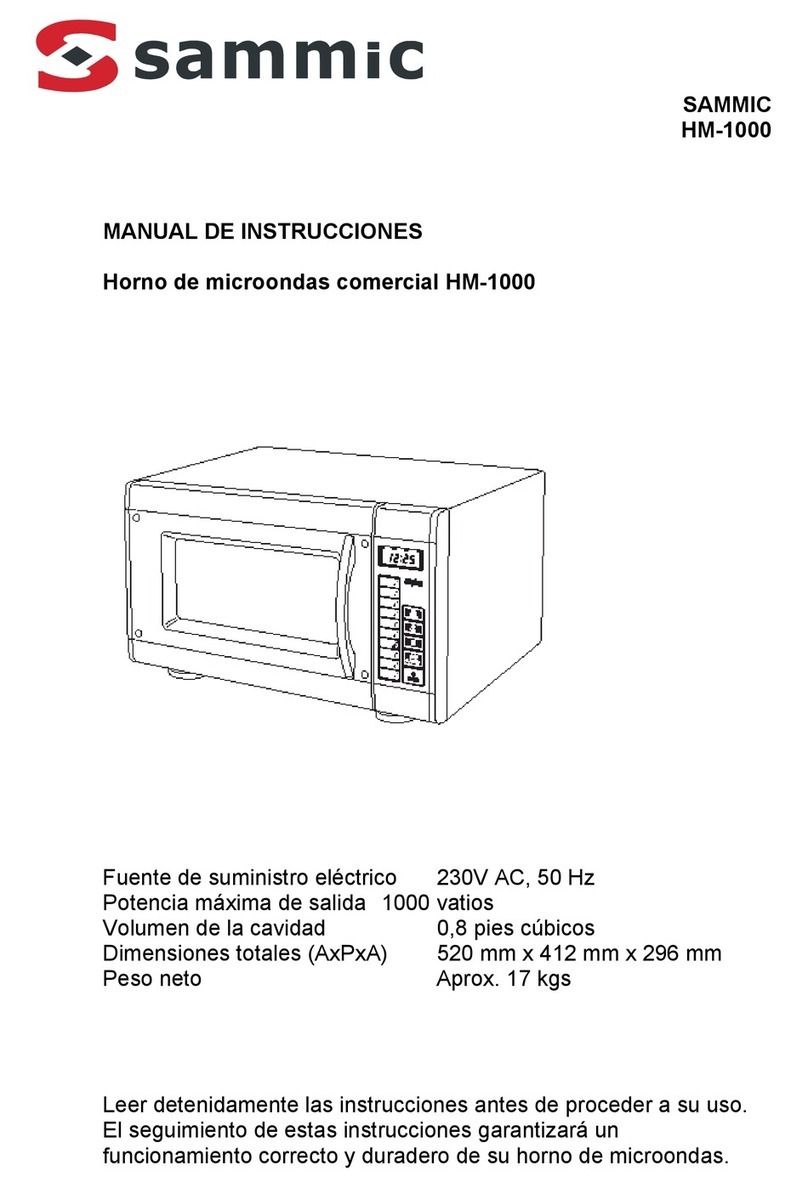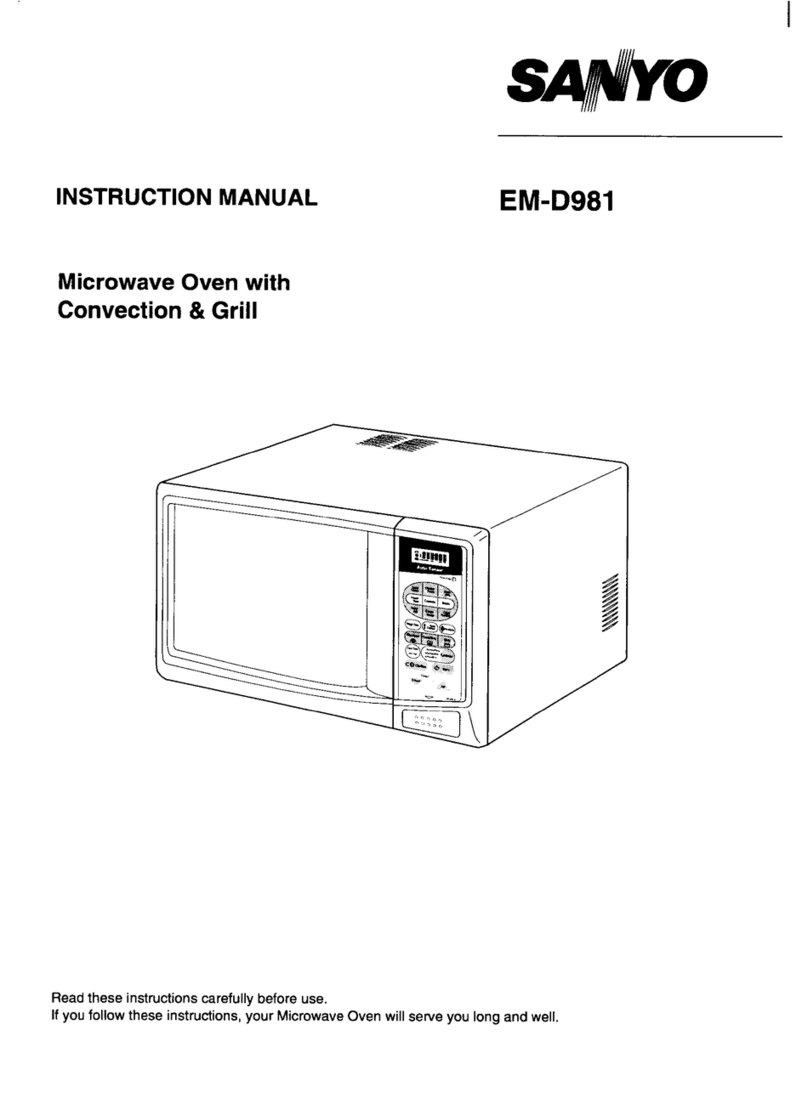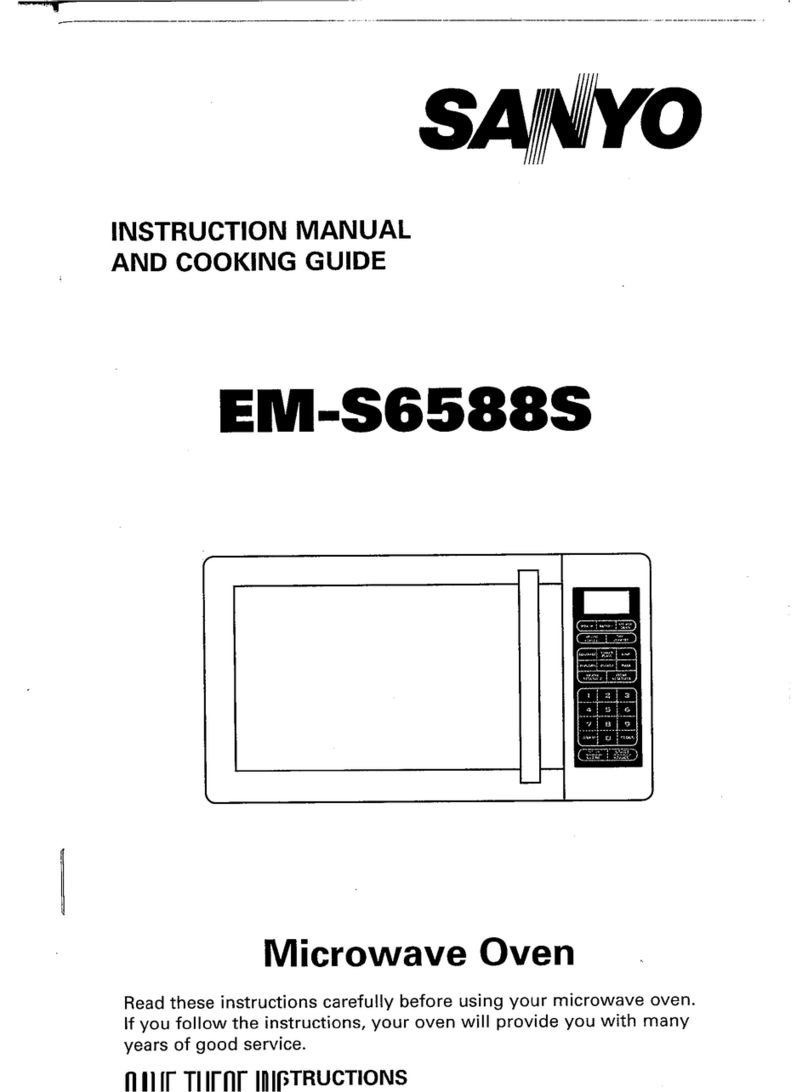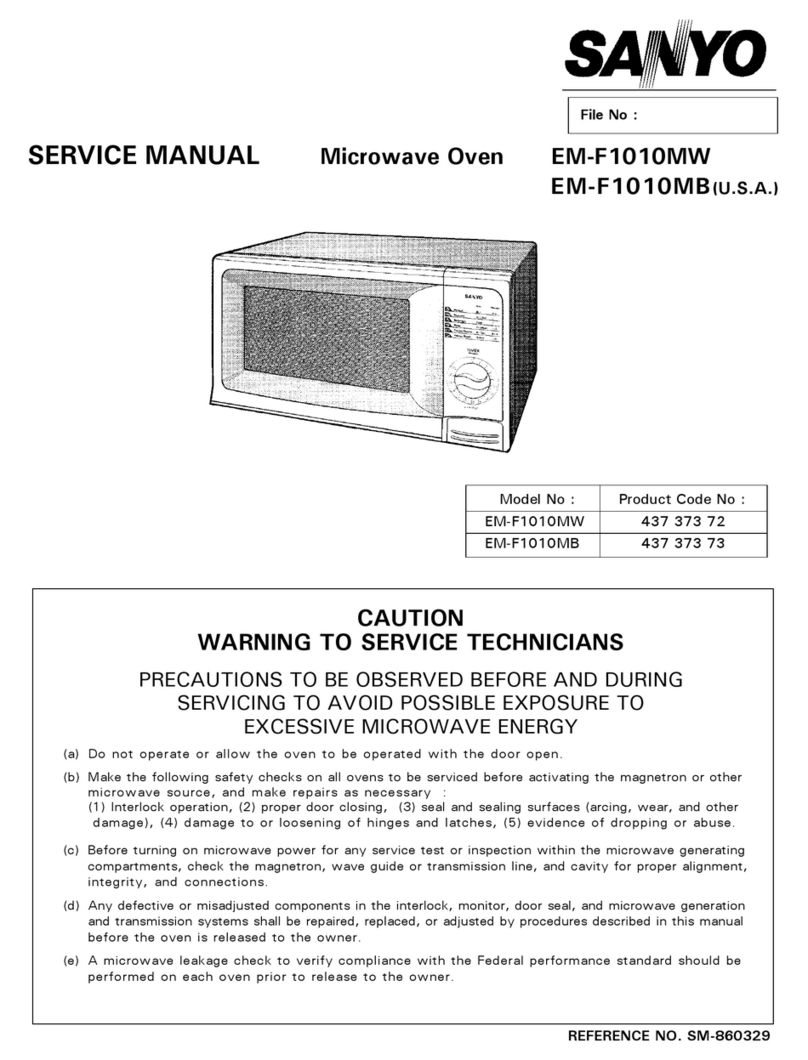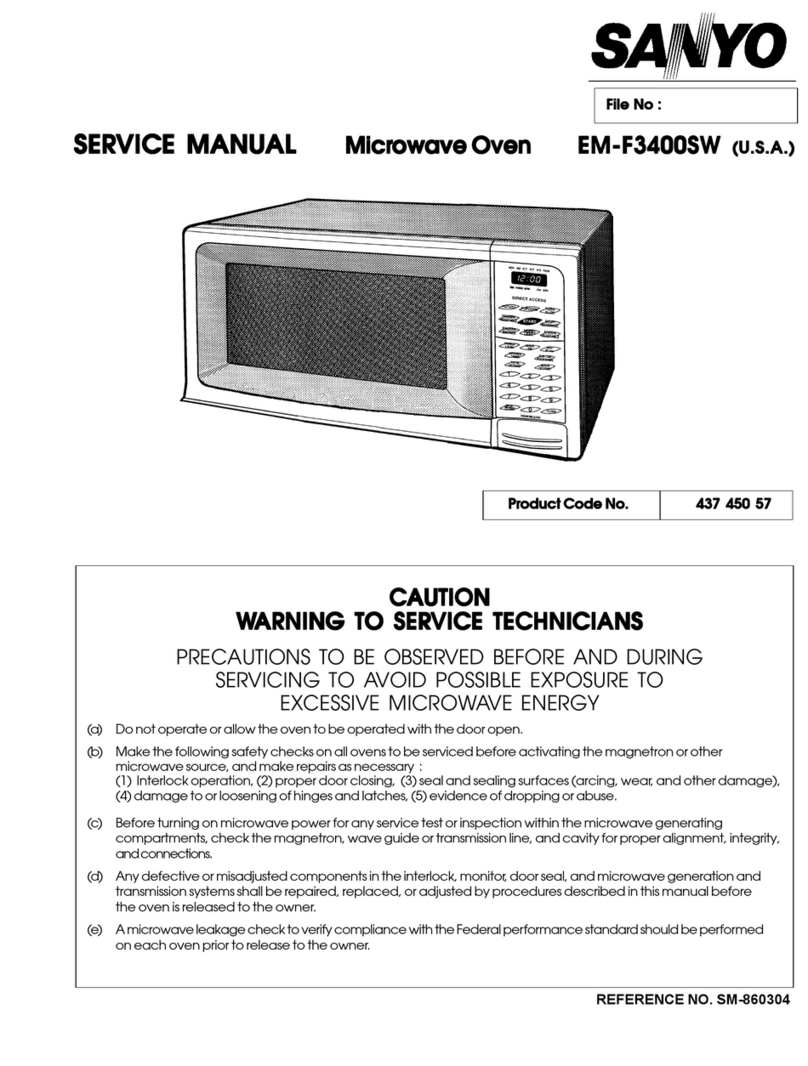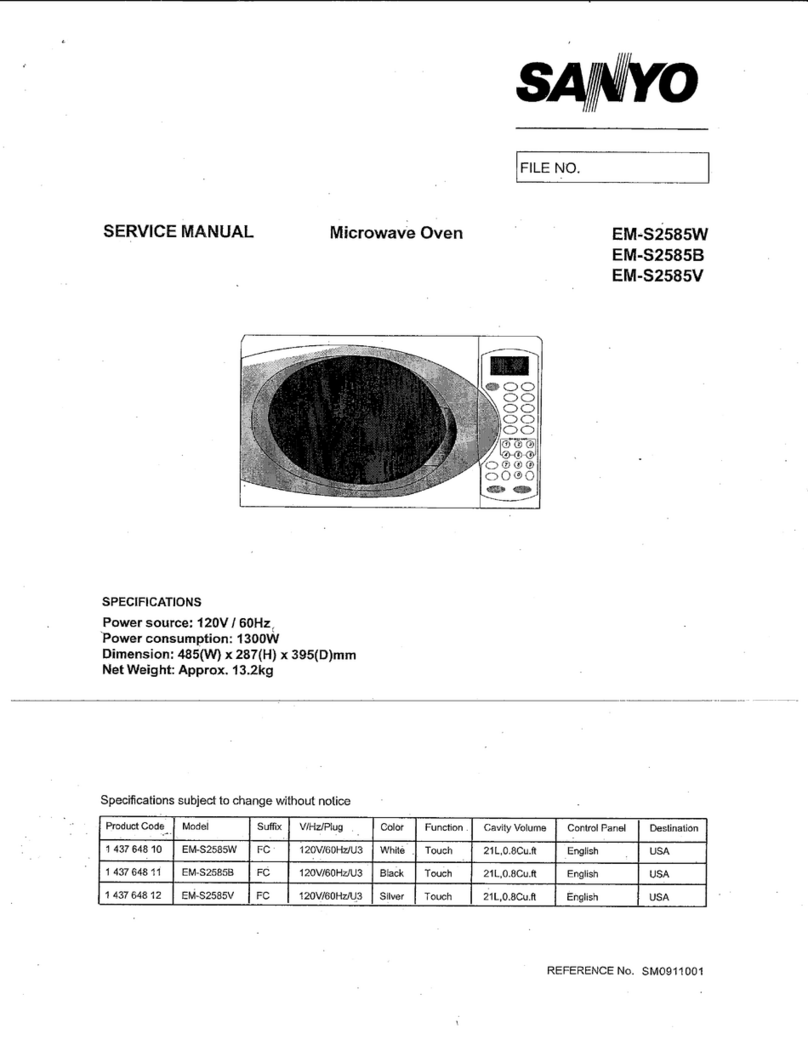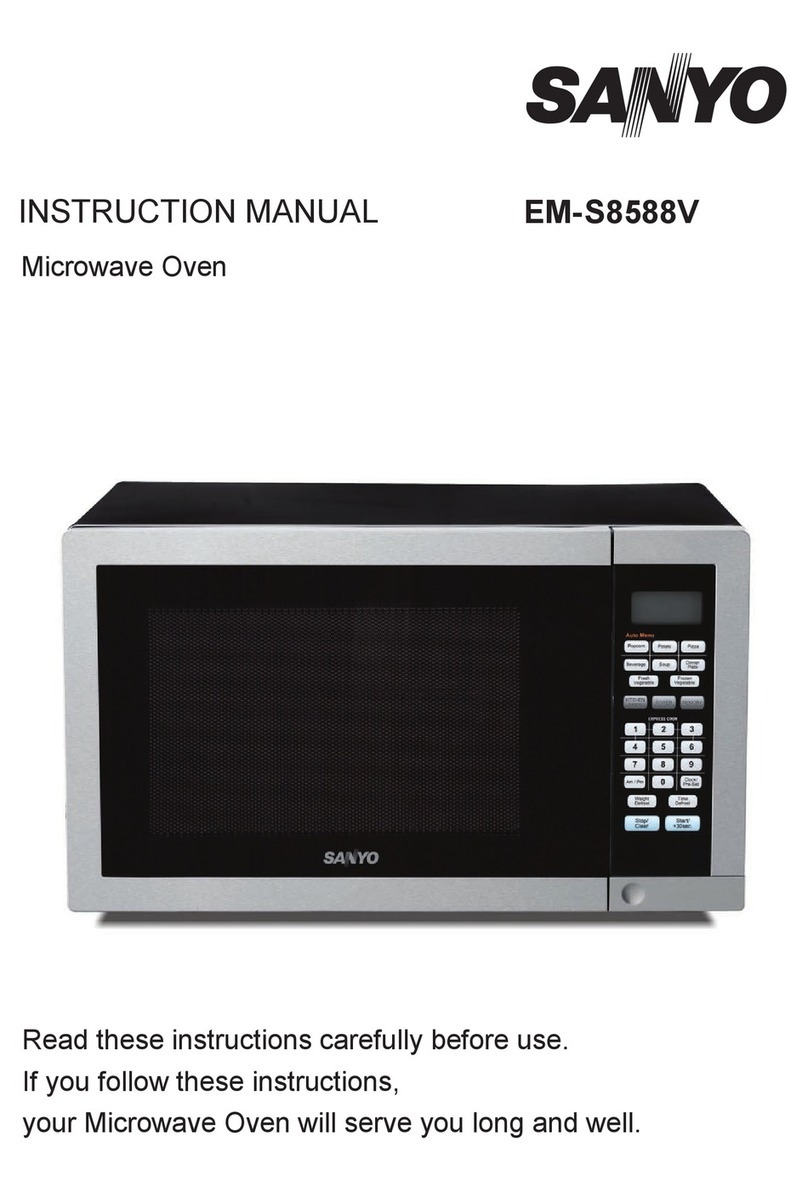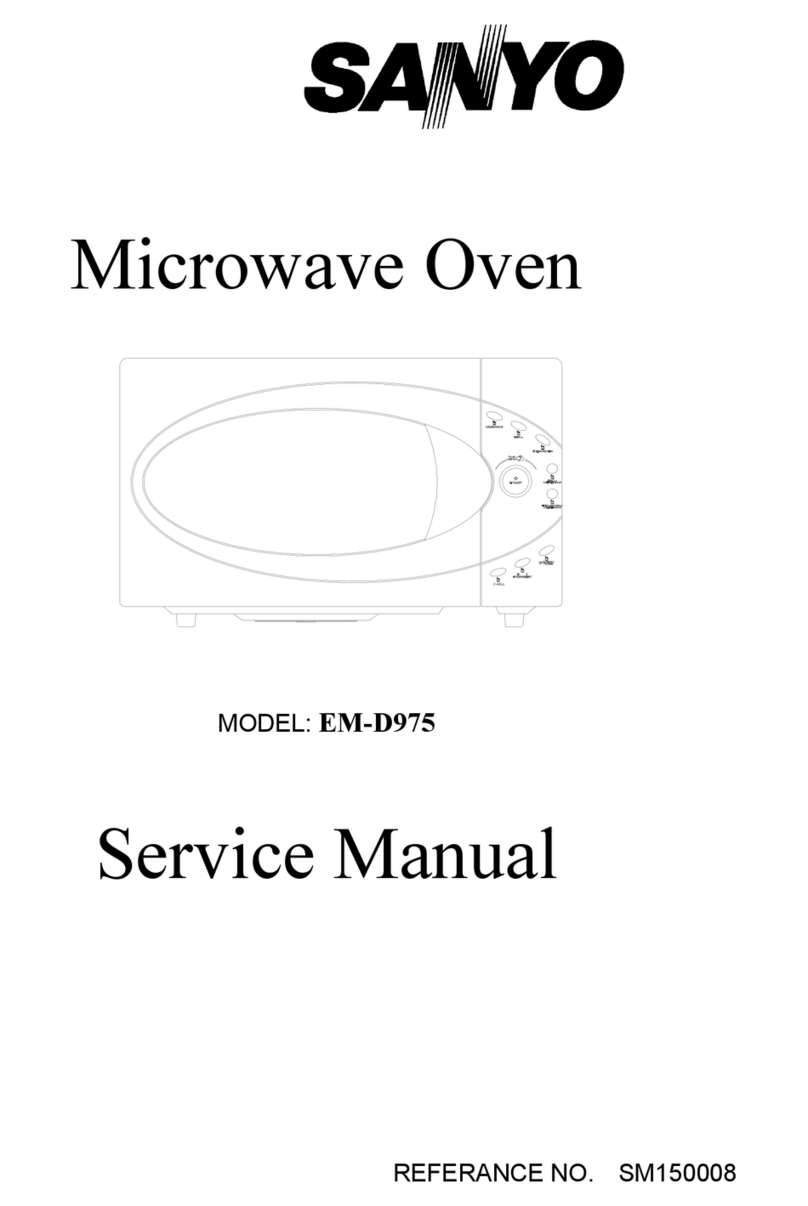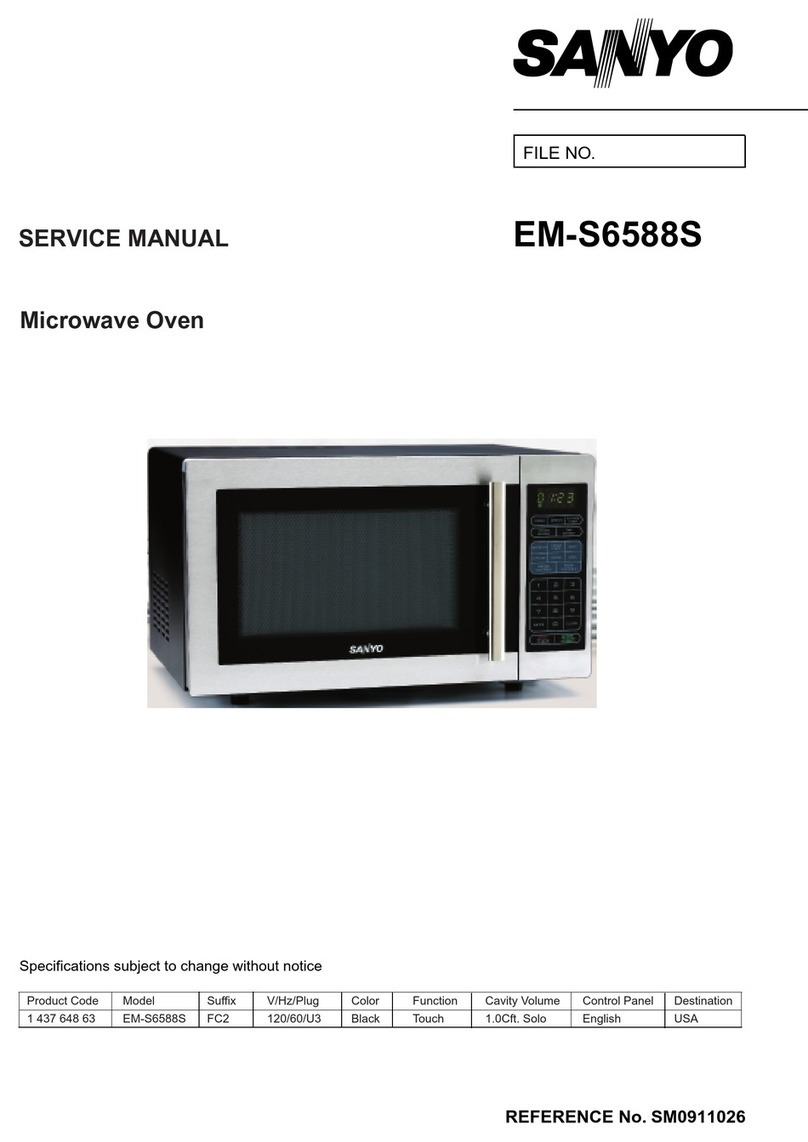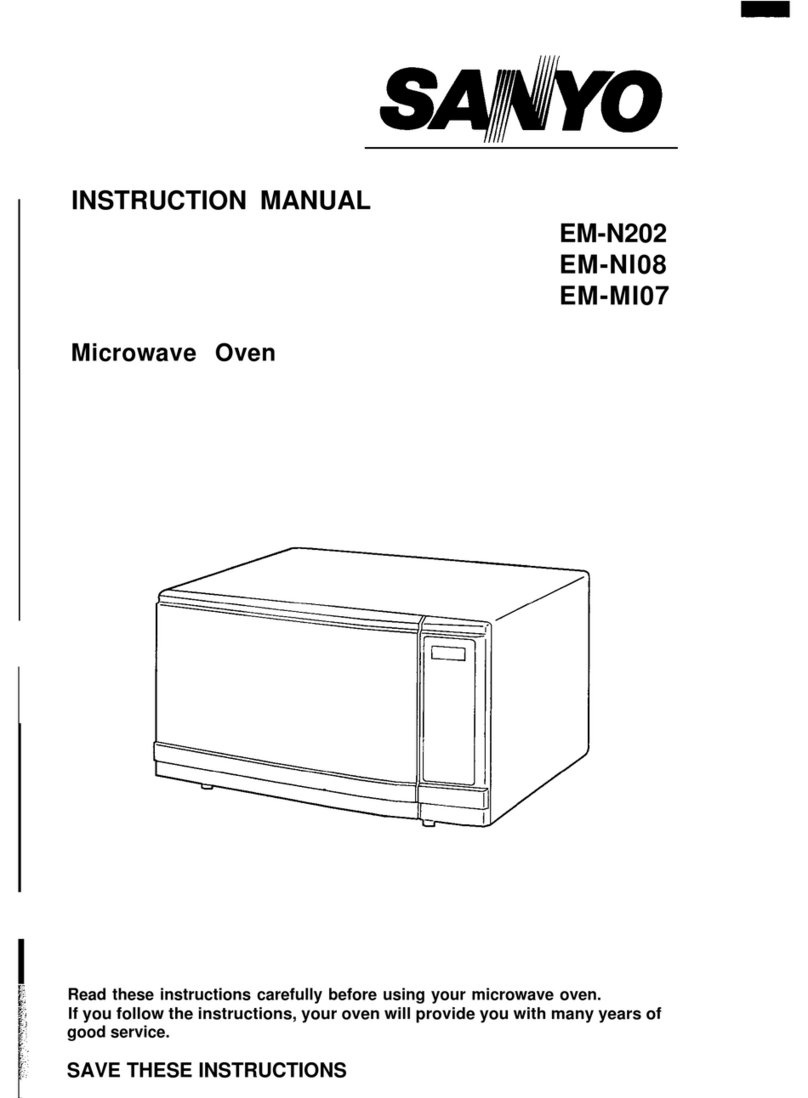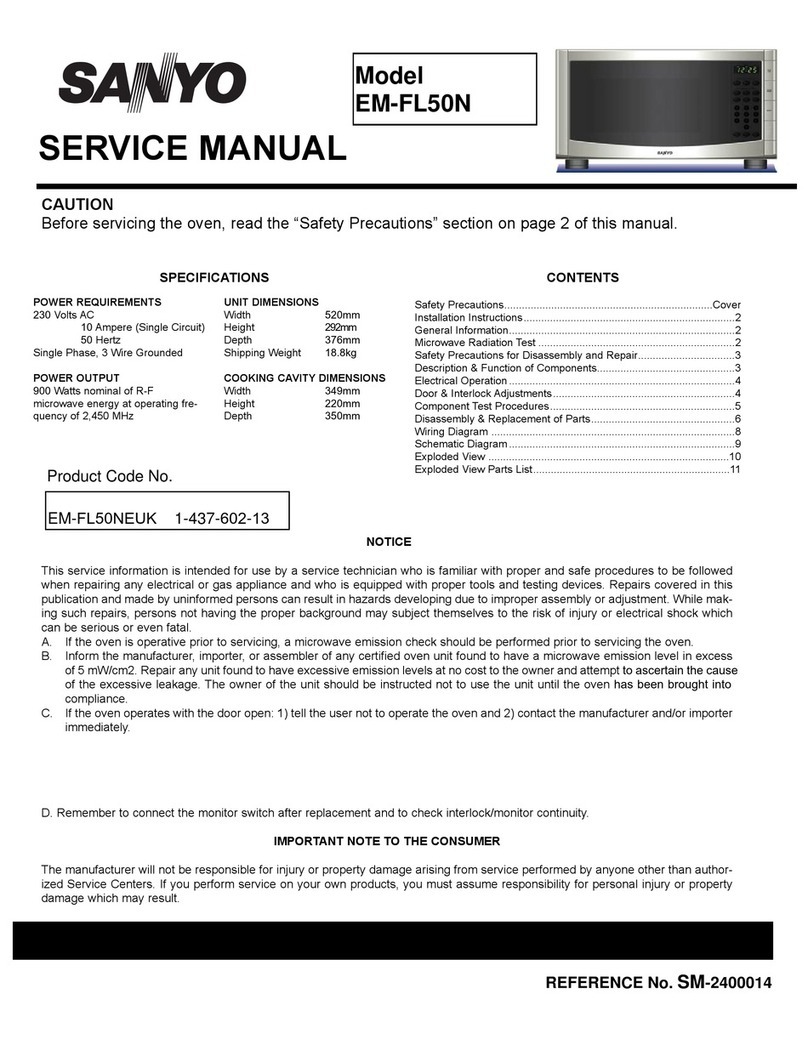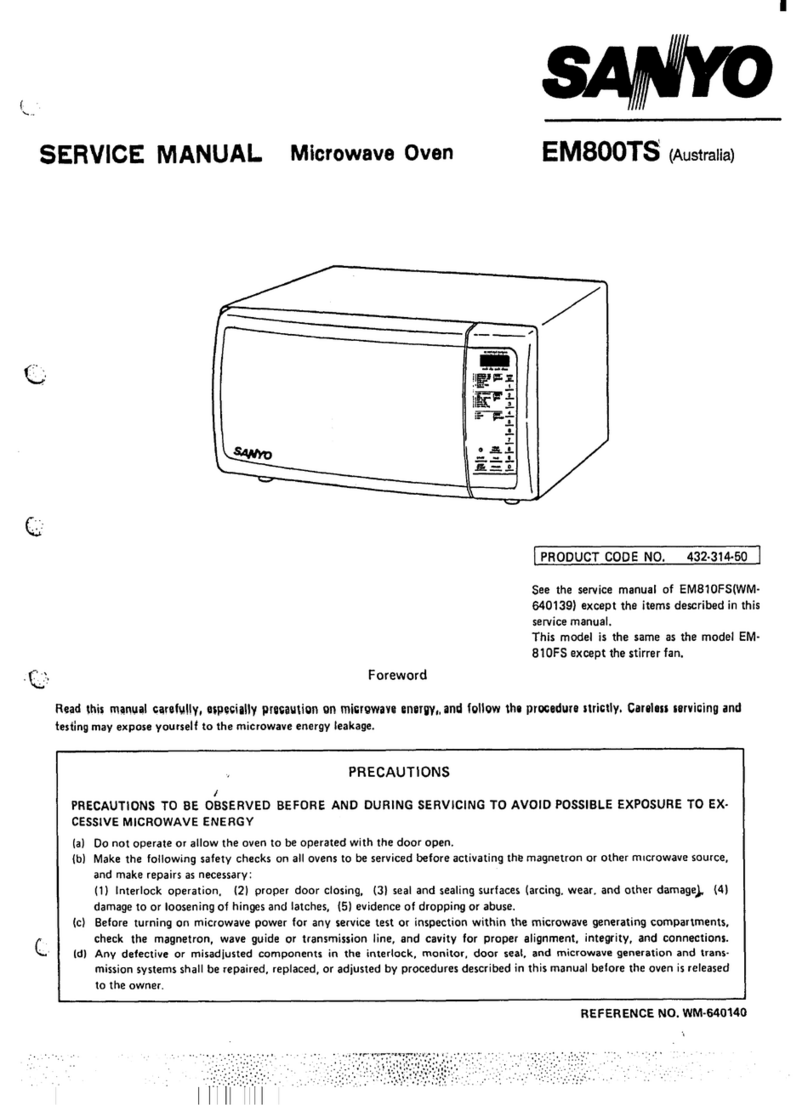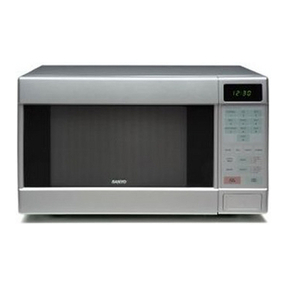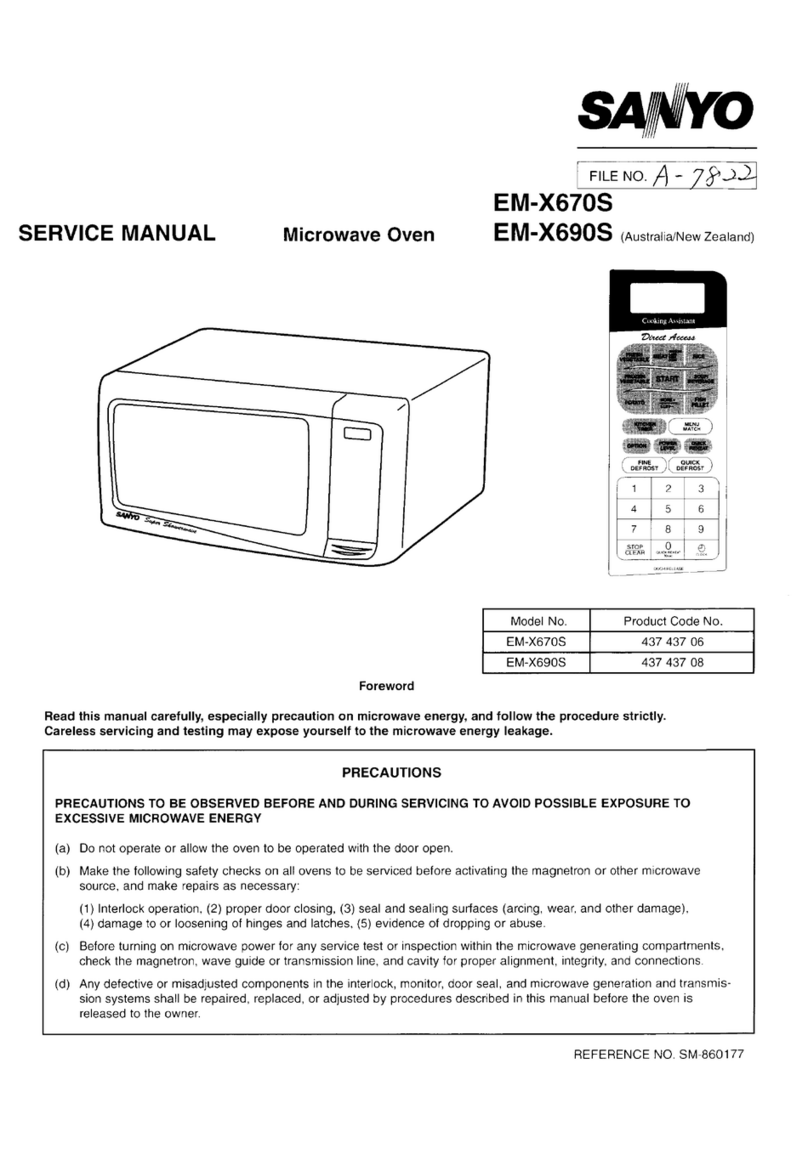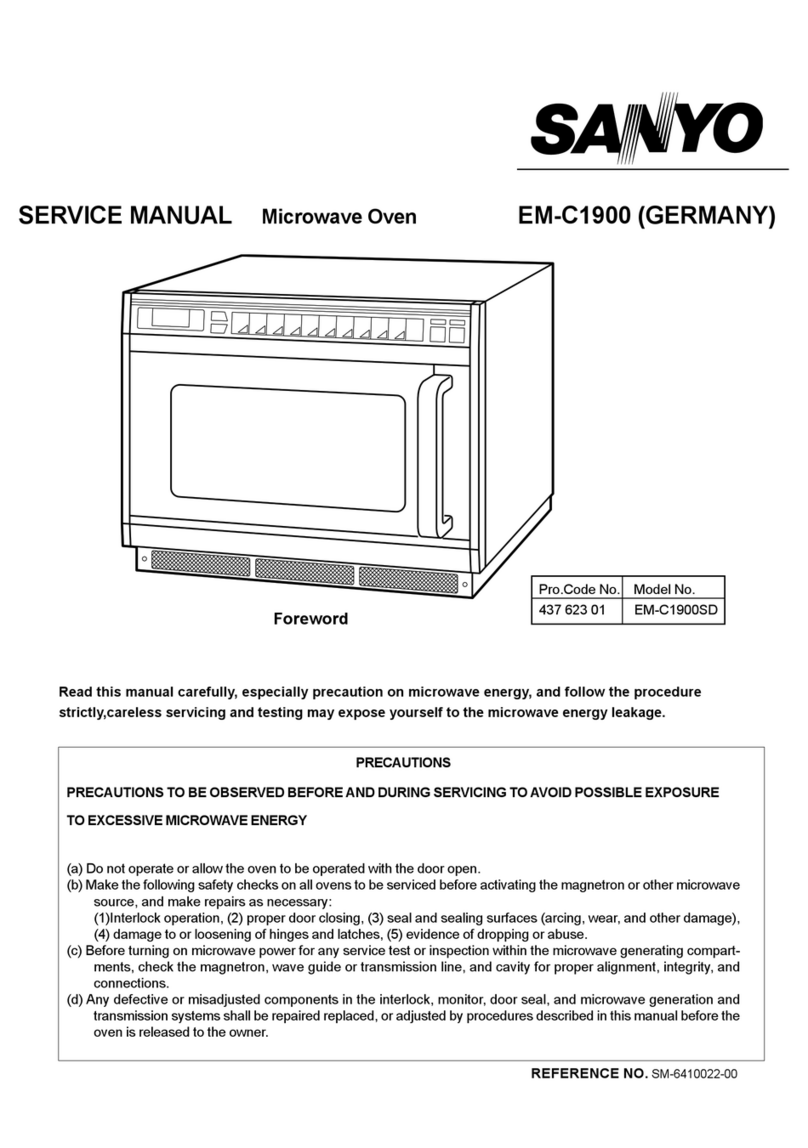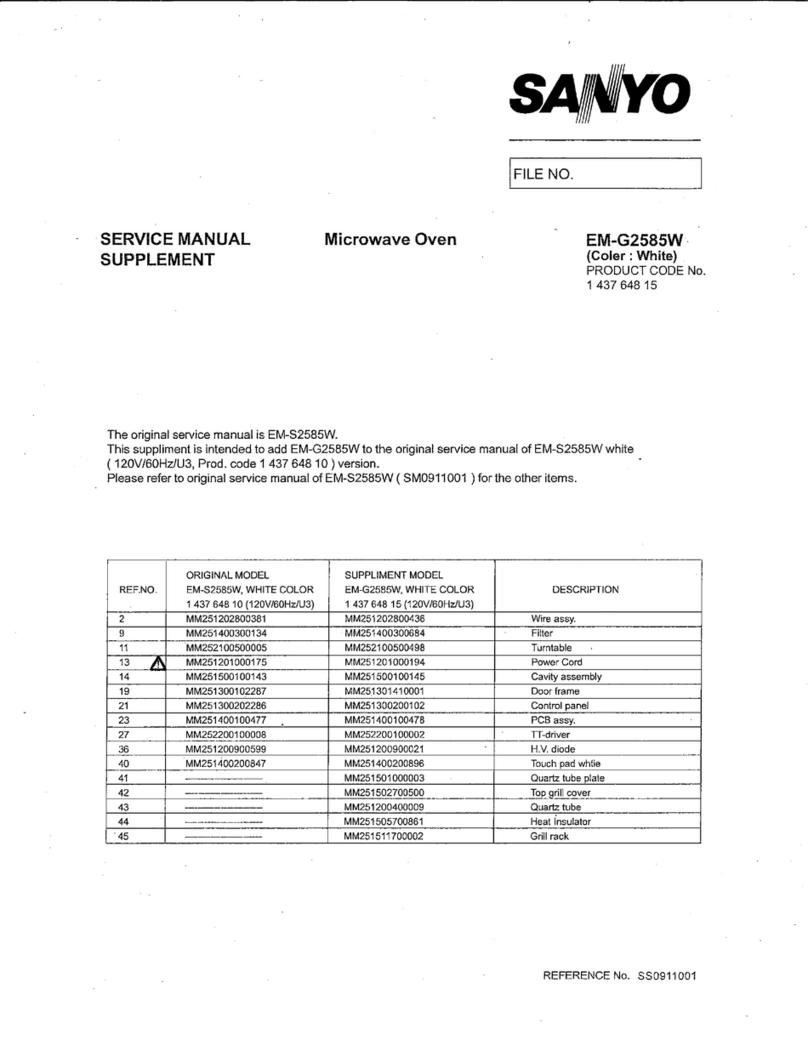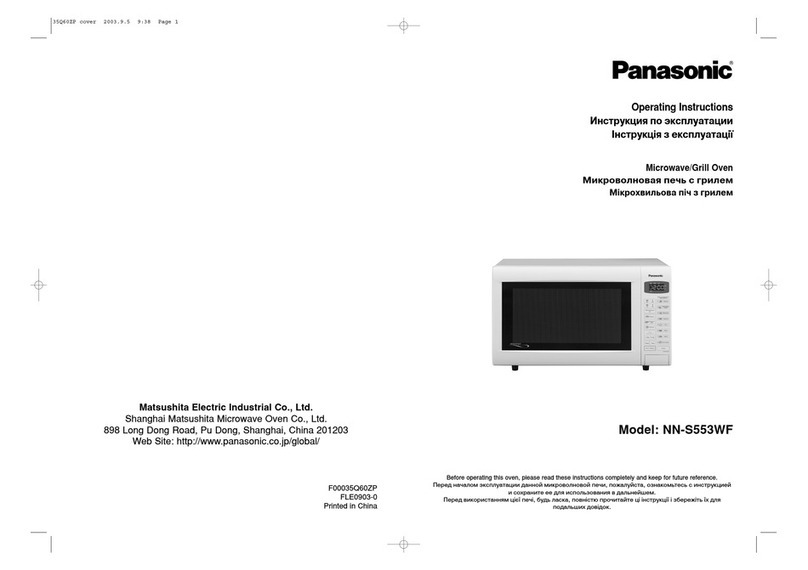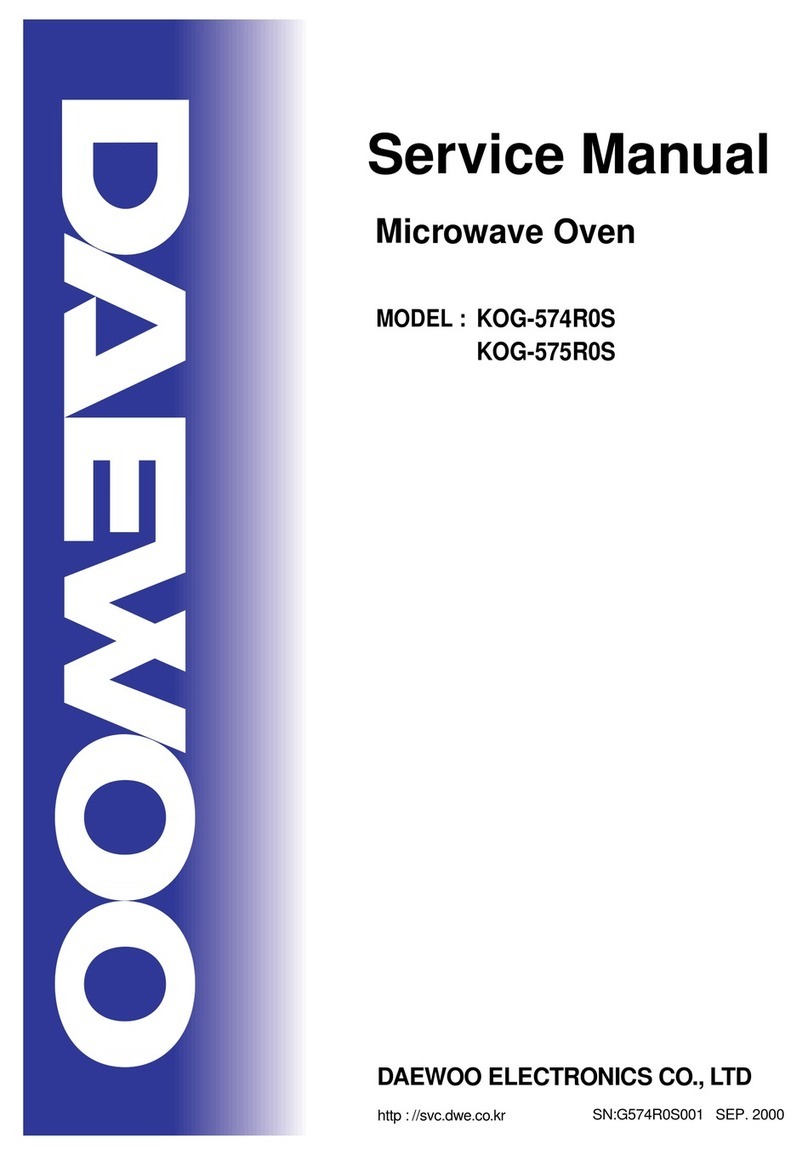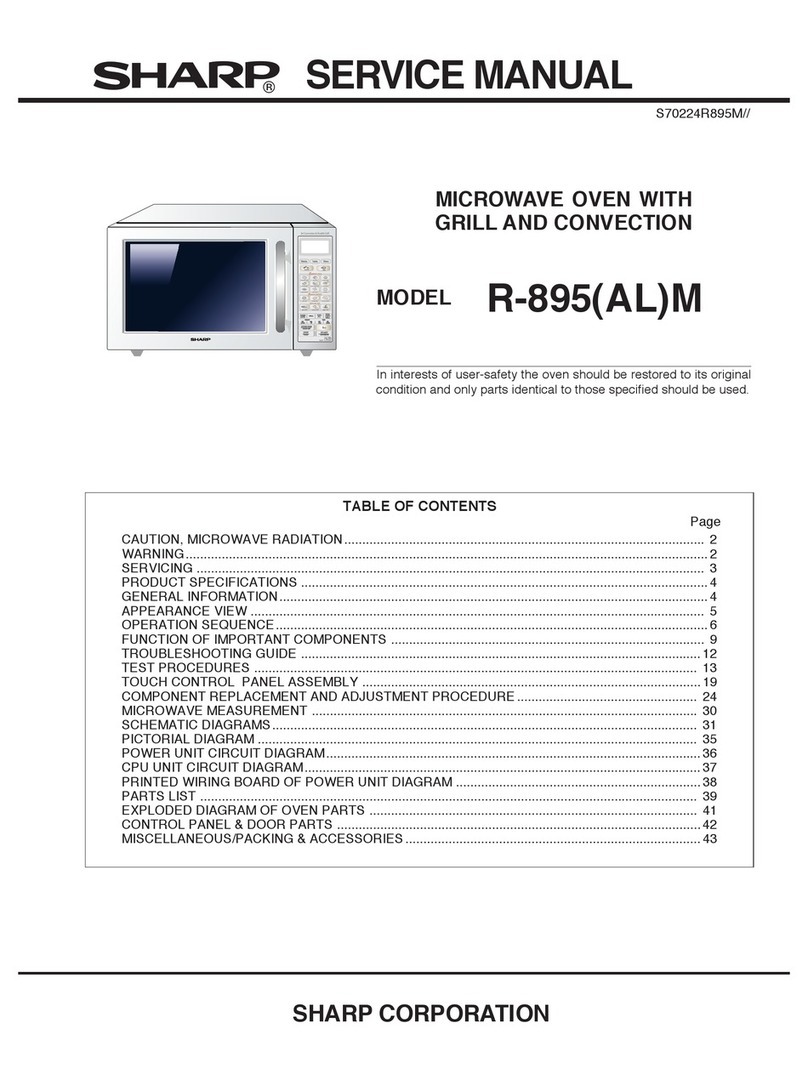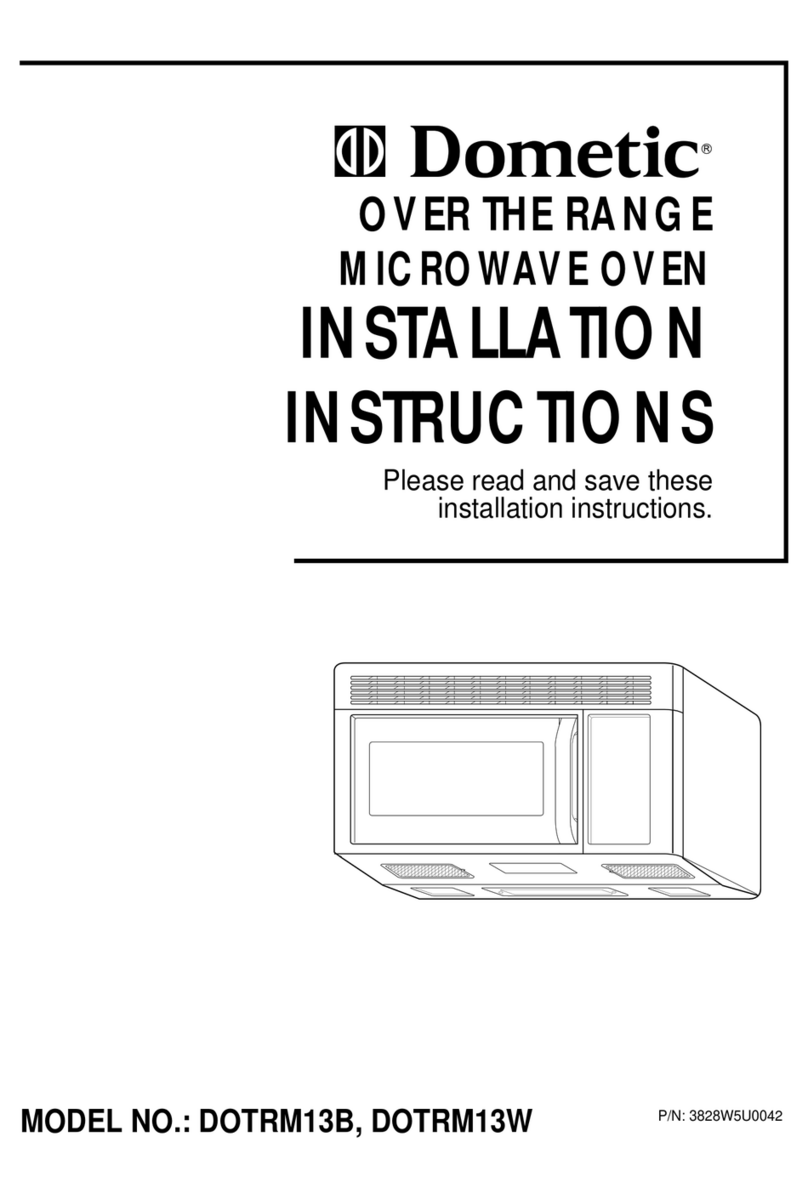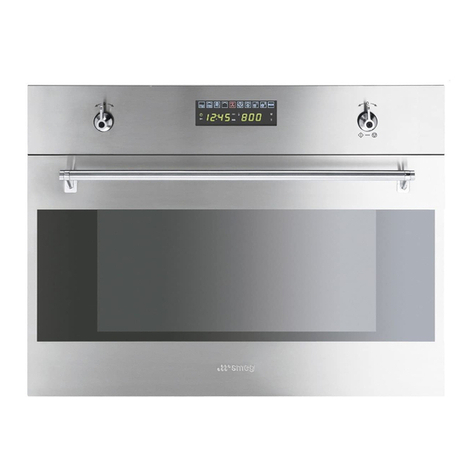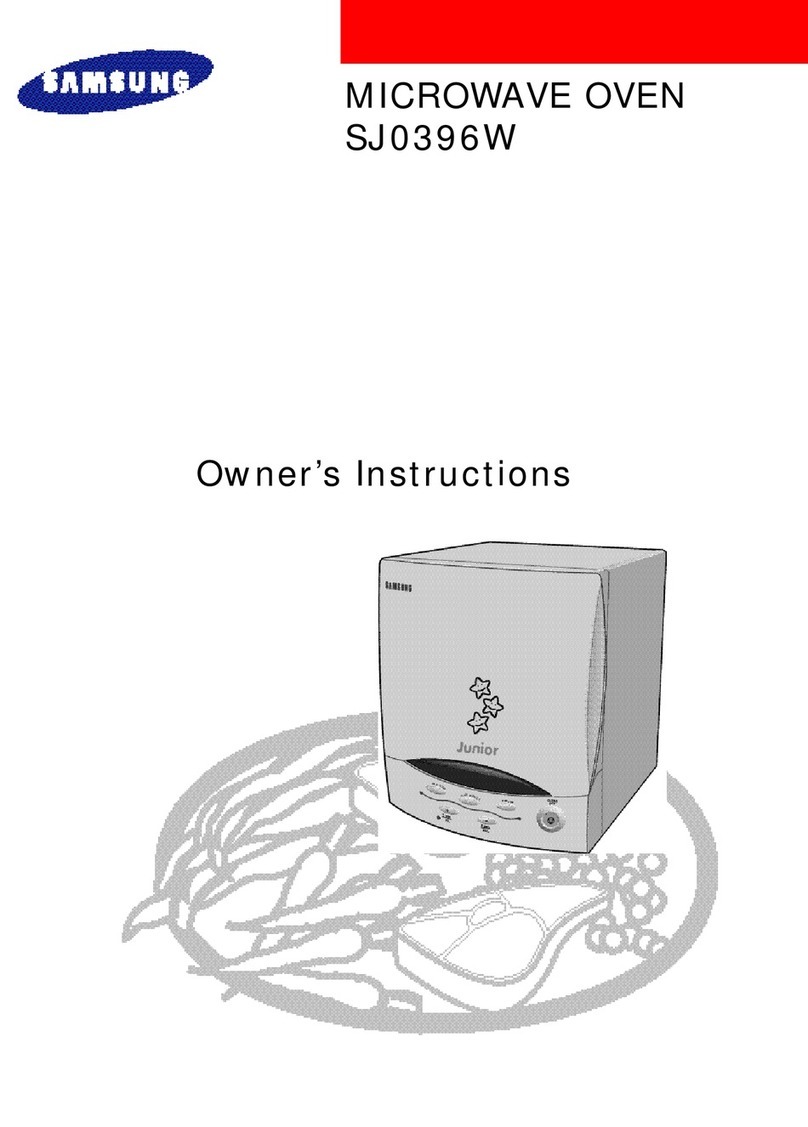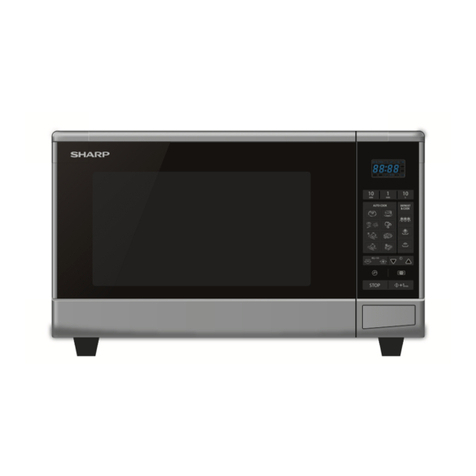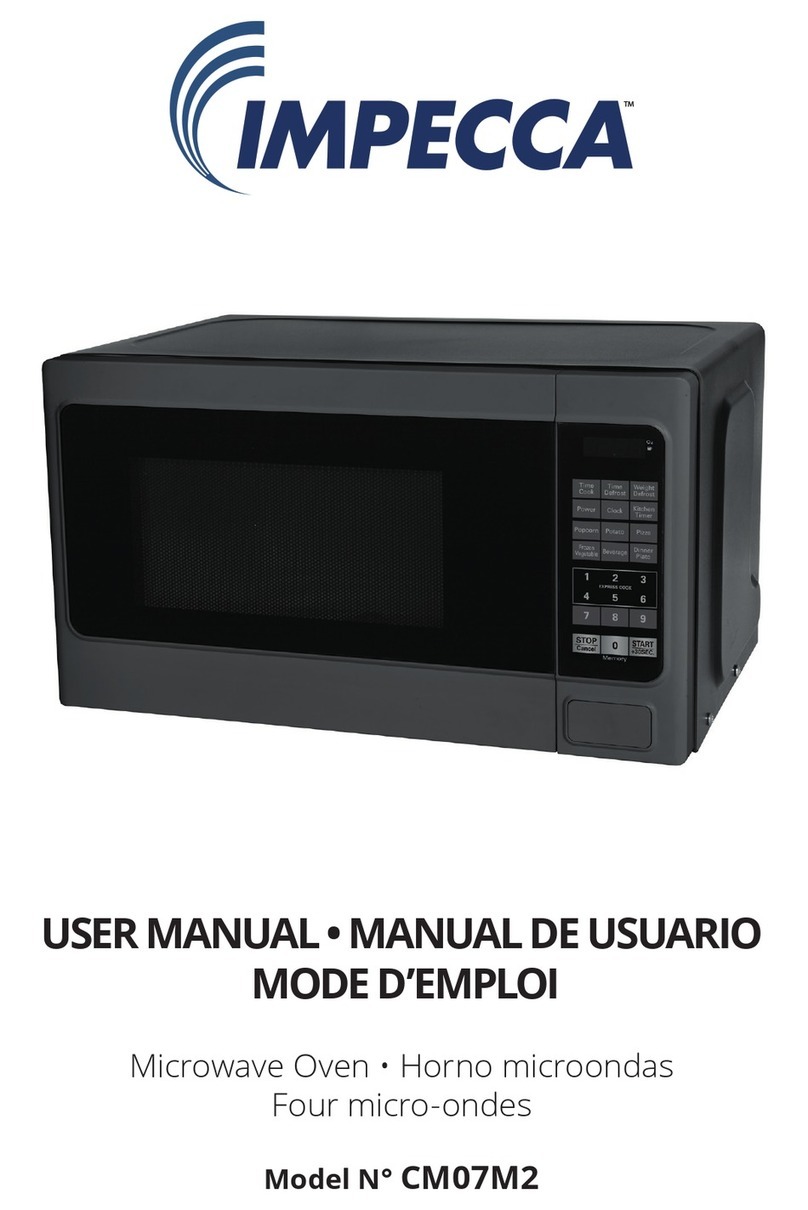- 2 -
2.SPECIFICATIONS
Microwave output ................1,800W to 180W
Frequency ...........................2,450MHz
Power supply.......................230V, 50Hz
Rated current ......................13 Amp.
Safety Device ......................
Thermal limitter (Magnetron)
150 °C Open
80 °C Close
Thermistor (Magnetron) ..200 °C Open
108 °C Close
Thermistor(Duct).............120 °C Open
Fuse (Cartridge Type) .....250V 10A
Micro switch, Relay
Primary interlock Switch
Interlock monitor Switch
Door sensing Switch and
Relay RL-3 and 4
Max. input time....................Electronic Digital, up to
Manual
10min.
Memory 30min.
Overall Dimensions........422(W)x540(D)x335(H) mm
Oven cavity size ............330(W)x330(D)x230(H) mm
Effective Capacity of Oven Cavity ...............19.1
liters
Net weight ...........................32Kg
3. POWER OUTPUT MEASUREMENT
(1) Prepare 1000+5g tap water.
(2) Adjust water temperature to 10•}2 °C .
(3) Pour water into a container made of borosilicate
Glass, 190mm outer diameter cylinder, maximum
3mm thickness.
Note :Use the container kept on the room tem-
perature.
(4) place the container on the center of oven cavity.
(5) Set the heating time for 27 seconds and rating
full power and then start oven.
(6) Take the container out immediately when heat-
ing time is up.
(7) Stir water for making even water temperature in
the container.
(8) Measure water temperature.
Water temperature rise shall be 8 to 12 °C.
4. PRECATIONS AND REPAIR SERVICETIPS
PRELIMINARY
A. SINCE NEALY 4,000VOLTS EXISTS IN SOME
CIRCUITS OF THIS MICROWAVE OVEN, RE-
PAIRS SHOULD BE CARRIED OUT WITH
GREAT CARE.
B.TO AVOID POSSIBLE EXPOSURETO MICRO-
WAVE ENERGY LEAKAGE,THE FOLLOWING
PRECATIONS MUST BETAKEN BEFORE SER-
VICING.
(1) Before the power is applied.
(a) Open and close door several times to make
sure the door interlock switch and interlock
monitor switch operation properly.
(Listen for the clicking sound from switches.)
make sure the interlock monitor switch is
closed after the latch interlock switch is open
when the door is opened. (See pages 1 and 8)
(b) Make sure the perforated screen and the choke
dielectric of the door are correctly mounted.
(2) After the power is applied.
(a) Open and close the door to see if the interlock
mechanism operates properly.
(b) Check microwave energy leakage with a leak-
age detector and confirm the energy leakage
is below 5mW/c‡u.
(3) Do not operate the unit until it is completely
repaired if any of the following conditions exists.
(a) Door is not closed firmly against the
cavity front.
(b) The hinge is broken.
(c) The choke dielectric or the door seal is dam-
aged.
(d) The door is bent or warped, or there is any
other visible damage to the oven that may
cause microwave energy leakage.
Note: Always keep the seal clean.
(e) Make sure that there are no defective parts in
the interlock mechanism.
(f) Make sure that there are no defective parts in
the microwave generating and transmission as-
sembly.
(especially wave guide)
(4) Following items should be checked after the unit
is repaired.
(a) The interlock monitor switch is connected cor-
rectly and firmly.
(b) The magnetron gasket on the magnetron is
properly positioned.
(c) Waveguide and oven cavity are intact. (No
leakage of microwave energy).
(d)The door can be properly closed and the safety
switches work properly.
(e) The oven must be stopped when the door is
opened or the time is up.
The oven must not be operated with any of the above
components removed or bypassed.
HINT FOR LAMP-CHANGE
Before removing the cabinet, pull out the main-plug.
If you want to check the new lamp with the open
Cabinet, take care of the following safety-cautions:
Do not touch live parts.The lamp holder is not con-
nected to the earth protection lead by a metric
screws.
